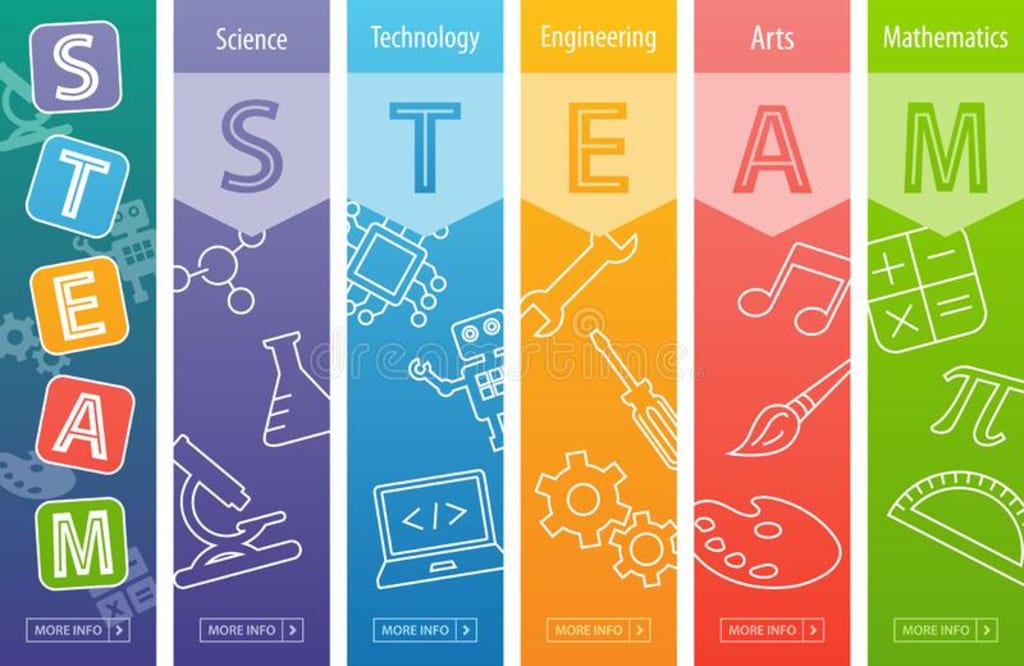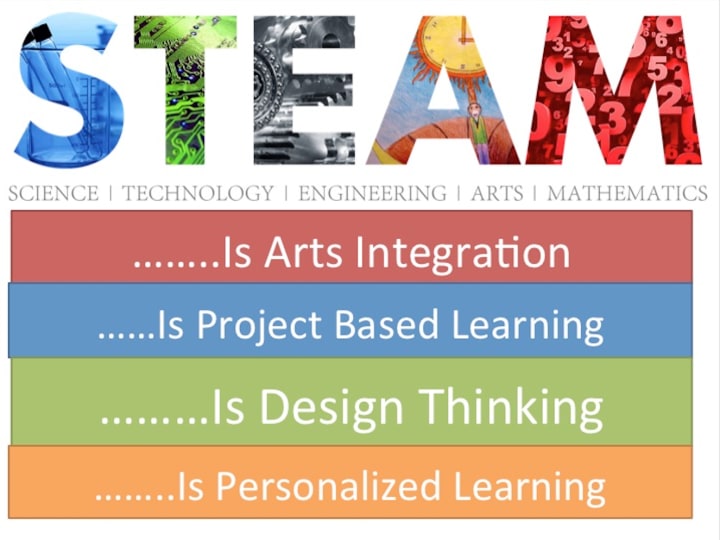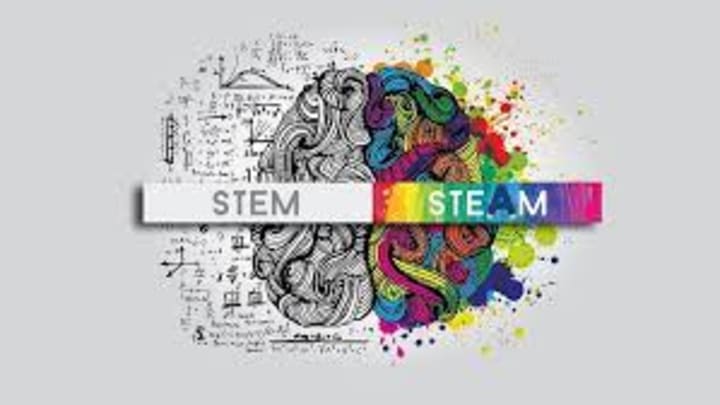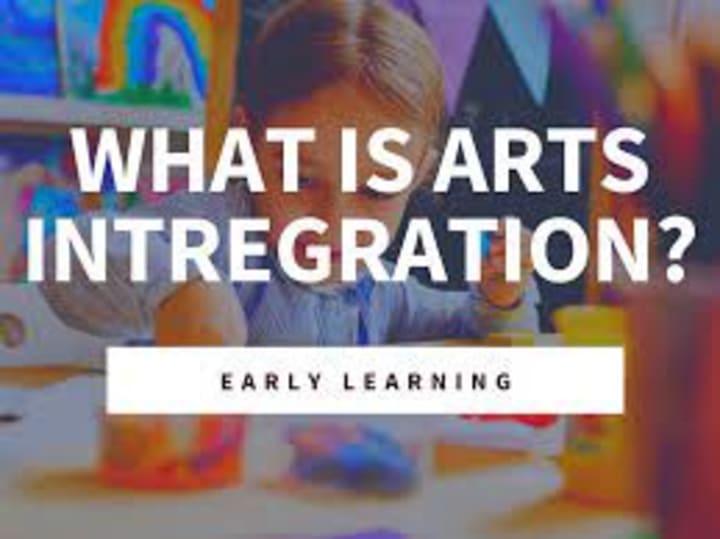From STEM to STEAM: The Evolution of Curriculum in UK Education
Integrating Arts in Education: The Shift from STEM to STEAM in UK Schools

Do you know that the traditional STEM curricula have been upgraded to STEAM now? The main agenda of introducing Artistic features in the technological prospects is to foster creativity among the learners. According to the current educational era, STEAM proposes more advantages in gaining the learner’s interests.
The evolution of the curriculum has great importance because it helps in boosting creativity and encouraging problem-solving skills. STEAM’s evolution aims at engaging more artistic knowledge in scientific concepts. This promotes critical thinking abilities and provides learners with an approach to both scientific as well as artistic knowledge.
What is STEM?

STEM is the combined abbreviation of science, technology, engineering and mathematics. It symbolises all the related courses and subjects of these four fields. This focuses on the practical and rapid development of student’s skill sets in the growing real world.
In the early stages, it was recognised as SMET and by the year 2001 it was changed to STEM. In 2001 STEM was re-designed by the scientific administration of the U.S. NSF (National Science Foundation).
The Emergence of STEAM
STEAM was introduced in 2006 by Georgette Yakman. STEAM is nothing else but a fusion of “Arts” within STEM and it aims at fostering soft artistic skills with hard technical skills. There is no such other difference involved in both except the engagement of Arts.
Why the Shift from STEM to STEAM?

As in the above section we have described why STEM was Redesigned to STEAM. The only major reason behind this was to promote artistic skills in STEM education. Some specific limitations appeared while making this great shift. The limitations involve exploring concepts via inquiry and problem-based aspects. STEM cannot provide such benefits as developing creative and critical thinking abilities to promote learning.
Arts play a major role in boosting critical thinking, problem-solving and creativity skills. This provides unique learning approaches to identify real-world problems and find solutions to them along with opening new opportunities for their academic accomplishments.

The Benefits of Integrating the Arts
As we have seen above the Arts play a major role in opening up creative opportunities for learners, but it also has some benefits which involve:
Enhancing creativity: students who avail the inherent benefits of arts improve their creativity and retain it for a longer period. Also, they are more expressive, confident, inclusive and collaborative learners.
Promoting critical thinking: Arts is an analytical subject which requires observation, research and study of the concepts. This encourages students to analyse and observe the potential of the world closely. Hence, it makes their skills more sharp and prepares them to think and analyse concepts critically.
Fostering innovation: Arts foster innovation by challenging conventional thinking and crossing hurdles. This helps in generating new and more innovative learning ideas. Also, the learners of Arts are good researchers and explorers and exploring creative things promotes innovation.
The Evolution of Curriculum in UK Education
UK’s curriculum never had a stop. And the main evolution was the shift to STEM and STEAM.
Historical perspective: There are numerous alterations took place in the academic curriculum of the UK. These alterations can be from classical to modern learning approaches. The early learnings of literature and philosophy have now changed to technical skills aimed at fulfilling societal needs.
Key changes over the years: there have been several changes made over the years in the educational curriculum of the UK. These changes are promoting more STEM courses to meet global technological fulfilments and fostering the engagement of STEAM to develop future skills and understanding.
Transform your research into a masterpiece with our dedicated PhD dissertation help, ensuring excellence and precision
Government Initiatives and Policies
Let us now discuss some of the government initiatives which has supported the growth of STEM & STEAM in the UK.
Support for STEM and STEAM: The UK’s government has prioritised the shift of educational curriculum to STEM & STEAM. They have proposed various initiatives to promote this curriculum in which the STEM ambassador program was involves. The involvement of arts and the shift towards STEAM was also government-approved.
Major policies influencing curriculum changes: national curriculum policy has been acclimated to promote interdisciplinary education in the UK. It provided a great emphasis on both STEM & STEAM. Also, the funding for arts programs has been raised to support and foster these curricula.
Challenges in Implementing STEAM
It wasn’t that easy to implicate and engage in STEAM education in the UK. there were various intrinsic challenges such as:
Resource constraints: Adapting a new curriculum can be costlier as it will require more resources and equipment. It will require training, infrastructure, and new tools. This can be problematic for schools which have low budgets.
Teacher training and readiness: Providing training for professional development to the teachers can be costly and time-consuming. It is necessary because adapting the learning techniques and concepts of STEAM can’t be easy for existing teachers.
Resistance to change: Switching towards STEAM can surely be resistible by many teachers and parents as their preference can be more towards STEM.
Case Studies: Successful STEAM Programs in the UK
Let us know some examples of how UK education successfully Incorporated STEAM programs:
Examples from primary education: Many of the primary education systems have initiated arts in the field of science.This has increased their student’s learning engagement.
Examples from secondary education: Several secondary education institutes have successfully engaged STEAM by providing interdisciplinary projects to create a collaborative learning environment.
The Role of Technology in STEAM Education
Technology has always played a major role in education and so in STEAM. Let me tell you how and by which tools:
Digital tools and resources: These help students get automatic, immediate and personalised feedback based on their activities. In STEAM digital tools help in learning basic coding and scientific concepts. These tools involve computerised and internet resources which facilitate education. Also, using digital tools writing academic tasks has become more reliable specifically mathematics assignments.
The impact of technology on learning outcomes: Technology has greatly impacted education as the tools and techniques used here can’t be compared with traditional schooling. Also, it has highly impacted the engagement of students in learning and made it more effective and flawless.
About the Creator
Arthur James
I have been working as an academic writer for the last five years at Native Assignment Help UK, specializing in providing outstanding University Assignment Help and our Experts is experienced in tailors high-quality assignments
Enjoyed the story? Support the Creator.
Subscribe for free to receive all their stories in your feed. You could also pledge your support or give them a one-off tip, letting them know you appreciate their work.






Comments
There are no comments for this story
Be the first to respond and start the conversation.